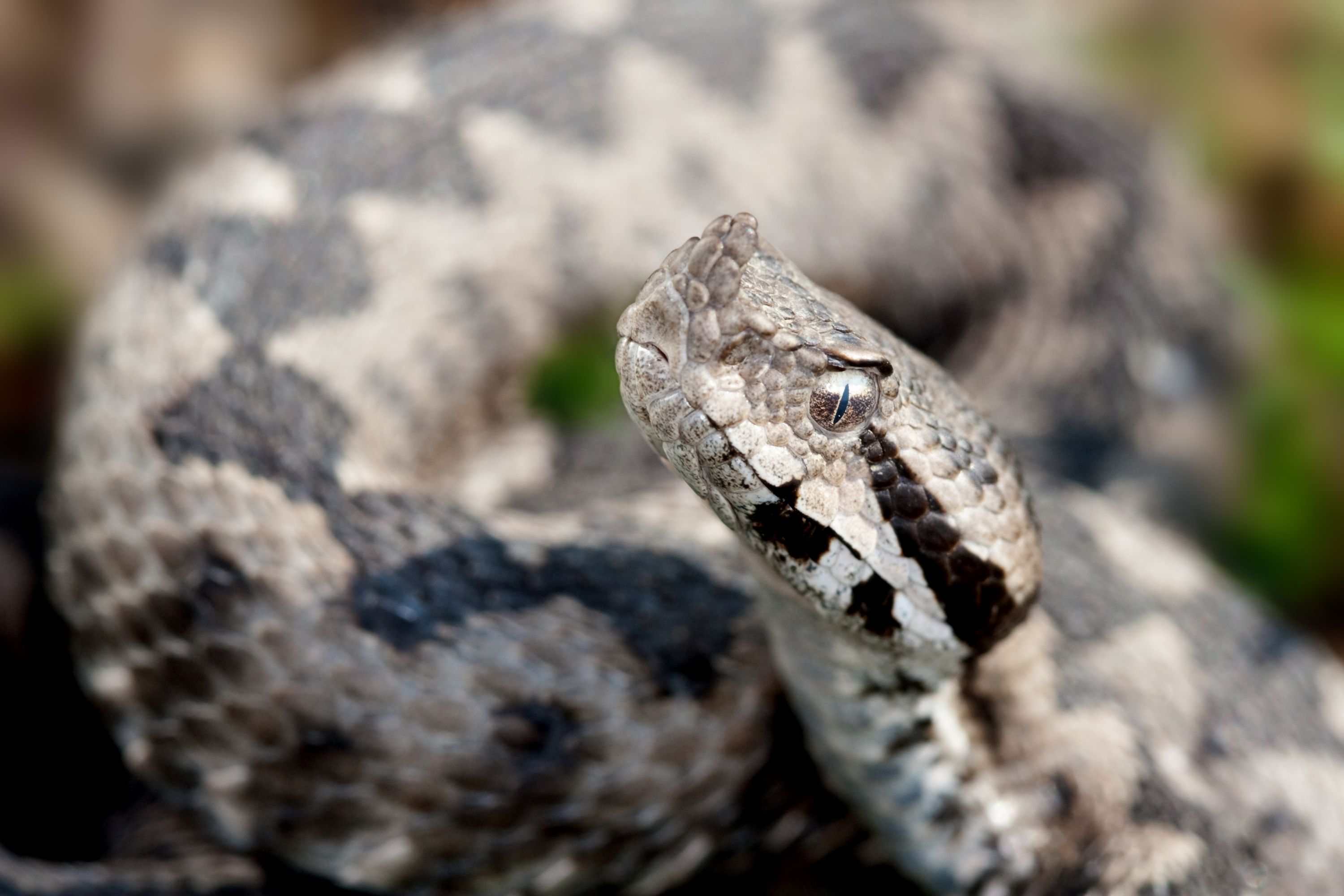Horned viper
(Vipera ammodytes)

Description
Vipera ammodytes (other common names include horned viper, long-nosed viper, nose-horned viper, sand viper) is a viper species found in southern Europe, mainly the Balkans, and parts of the Middle East. It is reputed to be the most dangerous of the European vipers due to its large size, long fangs (up to 13 mm) and high venom toxicity. The specific name, ammodytes, is derived from the Greek words ammos, meaning "sand", and dutes, meaning "burrower" or "diver", despite its preference for rocky habitats. Five subspecies are currently recognized, including the nominate subspecies described here. V. ammodytes grows to a maximum total length (body + tail) of 95 cm (37.5 in), although individuals usually measure less than 85 cm (33.5 in). Maximum length also depends on locality, with northern forms distinctly larger than southern ones. The average total length is 50–70 cm (19.5–27.5 in) with reports of specimens over 1 m (39 in) in total length. Females are usually larger and more heavily built, although the largest specimens on record are males. The head is covered in small, irregular scales that are either smooth or only weakly keeled, except for a pair of large supraocular scales that extend beyond the posterior margin of the eye. 10–13 small scales border the eye, and two rows separate the eye from the supralabials. The nasal scale is large, single (rarely divided), and separated from the rostral by a single nasorostral scale. The rostral scale is wider than it is long. The most distinctive characteristic is a single "horn" on the snout, just above the rostral scale. It consists of 9–17 scales arranged in 2 (rarely 2 or 4) transverse rows. It grows to a length of about 5 mm (0.20 in) and is actually soft and flexible. In southern subspecies, the horn sits vertically upright, while in V. a. Ammodytes it points diagonally forward. The body is covered with strongly keeled dorsal scales in 21 or 23 rows (rarely 25) at mid-body. The scales bordering the ventrals are smooth or weakly keeled. Males have 133–161 ventral scales and 27–46 paired subcaudals. Females have 135–164 and 24–38 respectively. The anal scale is single. The common name sand viper is misleading, as this species does not occur in mostly sandy areas. V. ammodytes primarily inhabits dry, rocky hillsides with sparse vegetation.
Taxonomic tree:







